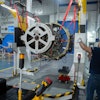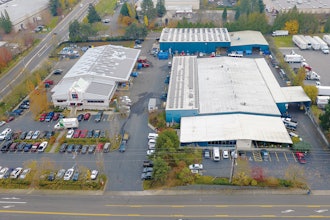On any given day I am granted the opportunity to meet with maintenance managers and supervisors. Many of them have worked their way up through the ranks to take on leadership roles. As mechanics and technicians, they had the opportunity to be critical and provide suggestions they felt would make a difference on the way the department was managed or the way the company was run. The combination of mechanical ability, leadership quality and ambition were characteristics influencing their promotions.
Once leadership roles were assumed, many newly appointed managers quickly realized that there was much more work and strategic decision making involved in the job than previously understood. The proverbial shoe was now on the other foot. The ones that succeeded did so because they blended a combination of decisiveness, experience, empathy and organization into the job. The managers and supervisors that spent a certain amount of time down on the floor understanding problems that occurred and listening to the operators, mechanics (and even the machines) were the ones that became the truly outstanding managers.
The idea of spending time understanding the problems by direct involvement is critical and beneficial regardless of the machine or application. A maintenance manager needs to spend time on the floor with the folks that are actually skinning their knuckles and getting dirty. If not, they will never truly know where the problems are and how to effectively address them.
The evolving maintenance function
The role of the maintenance technician has evolved over the past century. Many years ago, teams would only be relied on to fix a machine when it broke. This approach is known as "reactive maintenance." Even today, this approach is very common mainly because many companies just can't catch up to do the types of things they know would actually increase reliability and decrease downtime. Instead, they only attack the immediate need of the production floor. In many cases, there is not enough time or resources to engage in preventative, proactive practices.
Shortly after World War II, there was an increase in economic prosperity. An increase in domestic production of various items followed. The increase in production demands meant that equipment had to produce more products at less cost. For the first time, the use of electronics was heavily relied upon. This had a direct effect on productivity, but it also meant that maintenance technicians had to become quick studies in troubleshooting these electronic devices.
Computers (albeit first generation punch-card and reel) were now being used by many of the forward-thinking facilities for recordkeeping and data processing. Data was stored and analyzed. Manufacturing and maintenance technology in the late 1950s blossomed due to competition and innovation. Even the "space race" had an influence on manufacturing and maintenance. Large data management allowed for comprehensive preventive equipment maintenance techniques to be born. A new age of maintenance and reliability was established with a direct impact on productivity.
From failure to success: Preventative maintenance
During the space race, the National Aeronautics and Space Administration found it necessary to employ a technique called failure mode effect analysis (FMEA). Aerospace technology demanded that equipment failure was not an option. Therefore, when a part broke, the root cause had to be identified and a corrective action (and potential design changes) had to be put in place. This approach was quickly adopted by many factories; including part, tool, and machine manufacturers. FMEA had a direct effect on the bottom line and the quality initiative that many companies were attempting to develop. This technique helped foster the next generation of maintenance - "preventative maintenance."
Preventative maintenance is a practice of scheduling the rebuild or replacement of parts or machines prior to failure. Through recordkeeping, it is possible to determine that certain parts will fail after many hours of operation. Scheduled downtime to administer preventative maintenance became routine, with various parts being rebuilt or replaced prior to failure. It became quickly understood that unscheduled downtime could be reduced dramatically. Using preventative maintenance techniques, the maintenance team could now contribute to the facility's efficiency and profitability. Maintenance departments transitioned from a lost-cost center to a loss-prevention center.
As preventative maintenance techniques and practices began to flourish and evolve, the next natural progression would be to have a technician attempt to predict equipment failures as well as trying to prevent them. This form of mechanical clairvoyance is actually well understood. Many years ago, it was not uncommon for mechanics to listen to a bearing or a gearbox with a screwdriver. The mechanic would put the screwdriver handle to his ear and place the tip onto a gearbox, pump, or bearing housing and "listen." This is a technique I use to this day on various pieces of equipment, including engines.
Predictive maintenance and condition monitoring
The human ear is especially sensitive to various vibration states and our brains are wired in such a way that we tend to remember distinct variations of different sounds. It is actually rather easy to pick up the slightest amount of grit grinding away at a bearing race, or a pump experiencing subtle cavitation. Many companies have taken this concept and explored the non-audible regions of sound (Ultrasonic Analysis). This technique doesn't stop at sound but reaches into the broad spectrum of vibration (Vibration Analysis) and on through to the electro-magnetic spectrum of heat (Infrared Analysis). This approach is known as "predictive maintenance and condition monitoring;" when various analytical techniques are done on a regular basis to determine if failure is approaching. In this manner, action can be taken if imminent failure is approaching.
If preventive maintenance is a good diet and exercise, than predictive maintenance and condition monitoring is a check-up by your doctor that includes blood work (oil analysis), listening to your lungs and heart (acoustic and ultrasonic equipment analysis), taking your temperature (thermal analysis and IR Imaging), and a stress test (vibration analysis). These are only a few concepts that are being implemented today with great success. Other concepts such as continuing education, procurement specifications, and plant surveys are also finding great success.
Sources of Failure: Man, Materials, Methods, Machines
Anyone who has ever played organized sports or served in the Armed Forces had the following statement drilled into their heads: "Failure is not an option." This statement is true - failure does not have an option...of occurring. Failure will occur at some point, it is merely a question of when. There are some people who believe everything happens for a reason and then there are those that believe there is a reason why everything happens. Whether you believe in divine design or random occurrence, things fail. Success and reliability occur when failure can be minimized.
In general terms, the cause of failures can be grouped into four categories - man, machine, method, and materials:
Man as a failure source can occur from lack of training/experience, human error or poor supervision.
Machine as a failure source can occur from poor maintenance, equipment used beyond its design criteria, or machinery that is old and/or outdated.
Methods as a failure source can occur from lack of supervision, no s























